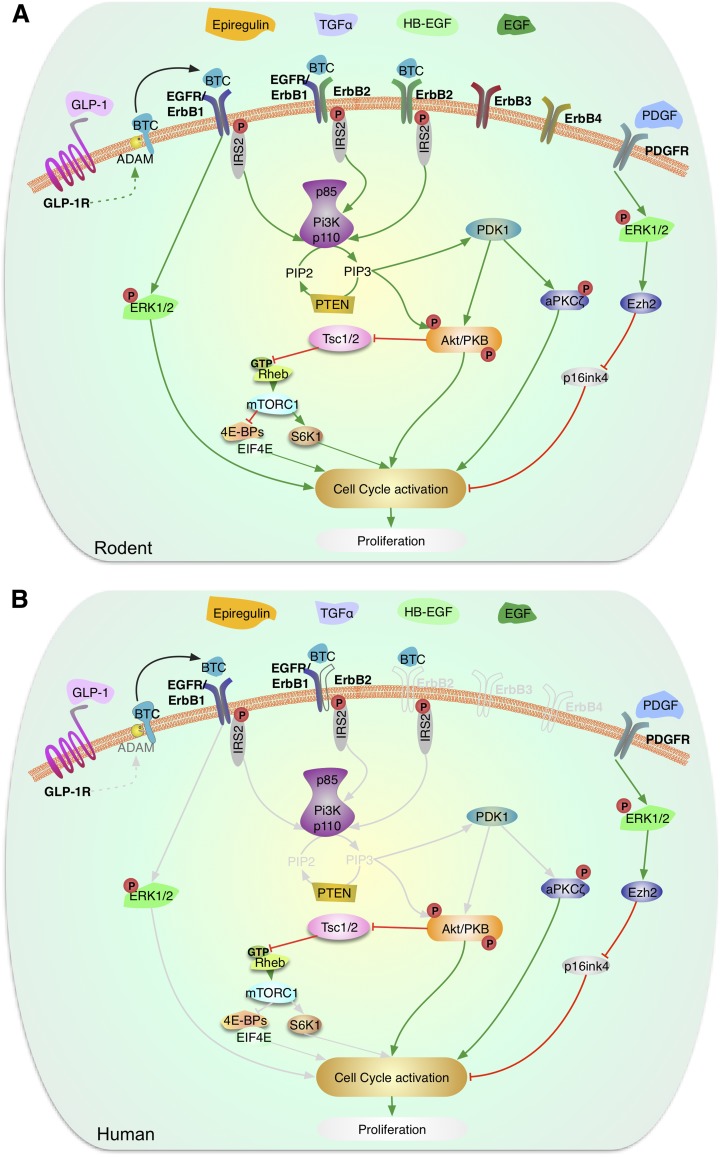Figure 2.
Signaling by EGF and PDGF in the regulation of β-cell proliferation. Schematic representation of the signaling pathways activated by EGF family of proteins and PDGF in rodent (A) and human (B) β-cells. Multiple members of the EGF family of proteins, including BTC, EGF, HB-EGF, TGF-α, and epiregulin, have been shown to act in β-cells. ErbB family of receptors is expressed in β-cells and BTC binding to ErbB1, also called EGFR, and ErbB2 has been reported to activate the IRS2/PI3K pathway, which in turn signals via PDK-1 to modulate Akt and PKCζ. EGF binding to ErbB receptors in β-cells leads to activation of Akt and ERK signaling pathways. GLP-1 through activation of ADAM proteins can lead to the secretion of BTC from β-cells that act upon ErbB receptors. Activation of these pathways leads to enhanced rodent β-cell proliferation, an aspect unknown in human β-cells. PDGF receptors are expressed in β-cells but their expression is attenuated during aging. PDGF binding to PDGFR leads to activation of ERK1/2, increased expression of the histone methyltransferase, Ezh2, repression of the cell-cycle inhibitor p16INK4, and increased β-cell proliferation. This pathway is preserved in juvenile human β-cells and leads to enhanced replication. Gray lines are molecules and pathways that are known to exist in rodents but are unknown in human β-cells. (A high-quality color representation of this figure is available in the online issue.)

